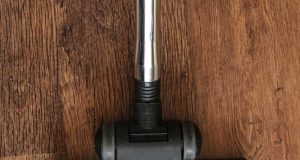Many individuals think that back pain results from lifting heavy loads. Nonetheless, actions involving bending forward, like vacuuming or washing dishes, may also lead to back discomfort. Essentially, the human back is not designed to withstand such extensive movements.
For beginners, the low back muscles are small compared to the rest of your body’s muscles. As a result, spraining or straining the low back is quite common.
When people bend over to vacuum, they often do so at the waist, which causes their back to round. Flexion is the bending motion, and it can cause sciatica, which is terrible news or NO BUENO!
Is Vacuuming Hurting Your Back
If you don’t use proper body mechanics when vacuuming or doing any other activity that includes pushing and dragging, it might be harmful to your back. Any movement that includes bending and twisting your spine regularly puts you at risk for a back injury. When we vacuum, we often plant our feet at one spot and bend and reach as far as we can with the vacuum. This method involves bending and twisting continuously as we stretch with the vacuum as far forward and around obstacles as feasible without taking another step. Instead, try walking with your vacuum. It will boost the range of steps you take each day and help you save your back.
Steps to Avoid Back Pain While Vacuuming
Do Not Bend Over
Once you’re vacuuming, it involves keeping your back straight, lowering your knees, and not moving your upper body. While vacuuming, keep close contact with your object and equitably divide your weight across both feet. Keep a tight grip on your stomach muscles. While you bend down again, remember to keep your back straight.
The Operator Must Be On One Foot at Moment When Vacuum Is Moving
The torque is transmitted from the spine to the hip’s muscular ball and socket joint. The hip joint is pushed around by some of the body’s most significant and most robust muscles.
Maintain a slight curve in your hip and knee joint to help evenly spread loads away from the spine.
Removing Clutter Before Starting
Remove as much clutter as possible from the room before beginning to minimize the amount of twisting and forward bending while vacuuming. Picking items up off the floor must be done by balancing on one leg, similar to how a golfer picks their ball out of the cup. For balance, use a nearby i-e chair.
It is Stretching Before And After Vacuuming
Sit in a chair and slowly bend forward through the waist, fingers pointing towards the floor, until you feel a mild stretch (no pain). Hold for 10-30 seconds, then repeat.
Hold Handle Near To Your Hip
You can reduce any torque exerted to your lower back by holding the handle near to your hip. I’ve discussed how the lower back muscle strain bears torque. But, in general, consider your back as a liver, using your waist/hips as the pivot point. The less torque is applied to your lower back, the closer you apply a force or weight to the pivot point. The force is pushing the vacuum in the instance of vacuuming. So you need to get the vacuum as close as possible to your hip.
Walk With the Vacuum When You Move It
Without bending over and reaching, how do you move the vacuum? Easy! Simply take another step forward and follow the vacuum. The muscles in your legs are significantly more significant than those in your low back and arms. Allow your legs to perform the heavy work.
Bending over while twisting your body might exert even more pressure on the tissues between your vertebrae, causing a disk to herniate. When vacuuming, twisting while bending over is a big no-no.
Conclusion
Cleaning a house is difficult! The discomfort that you feel after cleaning may be produced by strained or pulled muscles you don’t use daily.
Leaning over to lift boxes, mopping, and vacuuming, scrubbing, and dusting low areas requires remaining in a stooped or bent position. This can be tough for your back, and it might result in strain and damage.
Make sure you don’t stay in the same position for a long time. At least once each hour, take a break to stretch. Remember that proper posture reduces the risk of back and neck problems while also making the task easier.




